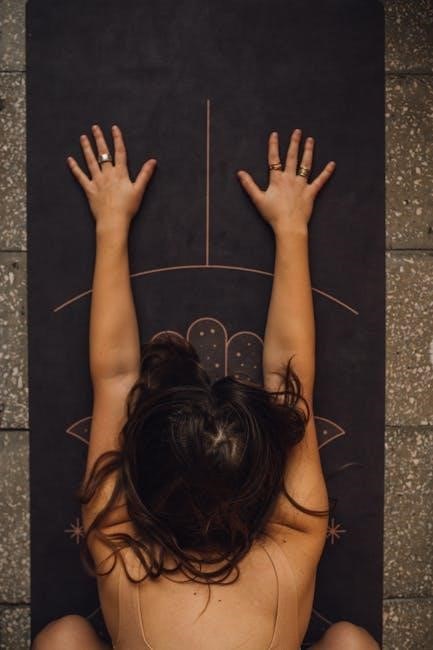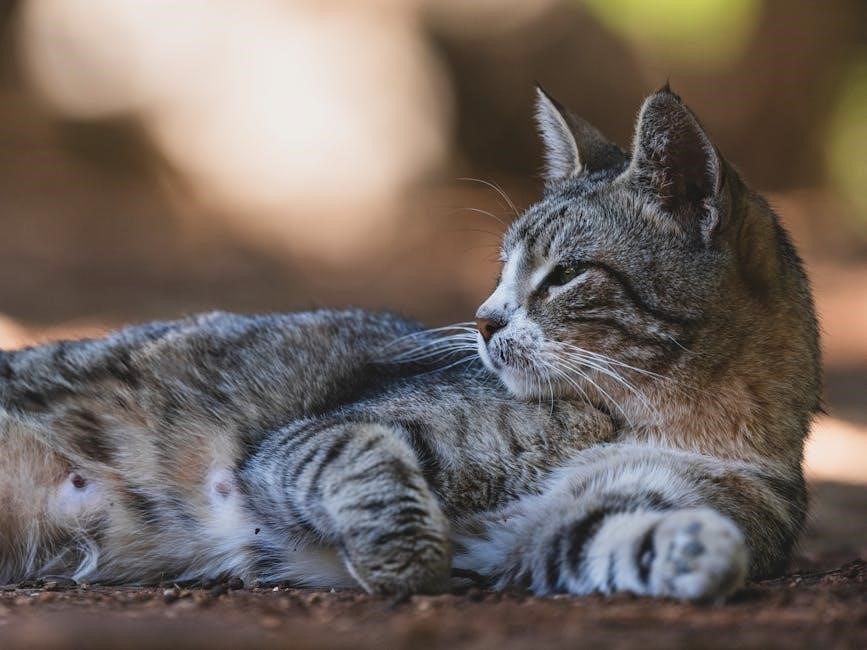Ear stretching, a popular form of body modification, involves gradually enlarging pierced earlobes to accommodate larger jewelry․ It’s a transformative process that combines self-expression and cultural significance, allowing individuals to personalize their style and embrace uniqueness․ This guide explores the fundamentals, from understanding sizes to aftercare, helping you navigate your journey confidently;
1․1 What is Ear Stretching?
Ear stretching, or ear gauging, is a deliberate process of enlarging pierced earlobes to accommodate larger jewelry․ It involves gradually increasing the diameter of the piercing using specialized tools like tapers․ This body modification allows individuals to achieve desired aesthetic goals, with sizes measured in gauges, millimeters, or inches․ Starting from smaller gauges (e․g․, 20G) and progressing to larger ones (e․g․, 00G or beyond), the process requires patience and proper aftercare to ensure safe and successful results․ Ear stretching is a popular form of self-expression worldwide․
1․2 Popularity and Cultural Significance
Ear stretching has gained significant popularity worldwide, becoming a prominent form of self-expression and cultural identity․ Rooted in ancient practices across Africa, Asia, and Latin America, it symbolizes spiritual, social, or aesthetic values․ Today, it appeals to diverse groups, from younger generations embracing alternative fashion to individuals seeking unique personal styles․ The ability to customize earlobe sizes and jewelry makes it a versatile and meaningful form of body art, reflecting individuality and cultural heritage․ Its enduring appeal highlights its role in both tradition and modern trends․

Understanding Ear Gauge Sizes
Ear gauge sizes measure the thickness of stretched earlobes, with smaller numbers indicating larger diameters․ Common sizes range from 20G to 00G, using gauge, millimeters, or inches․
2․1 Gauge System Basics
The gauge system measures earlobe thickness, with higher numbers indicating smaller diameters․ Starting from 20G or 18G, common sizes progress to 14G, 12G, and so on․ Gauge decreases as the size increases, reaching 00G before transitioning to millimeters or inches․ This system, originating from British standards, is widely used in body jewelry․ Understanding gauge basics is crucial for selecting the right tools and jewelry, ensuring safe and effective stretching․
2․2 Common Gauge Sizes for Stretched Ears
Common gauge sizes for stretched ears range from 20G to 00G, with smaller numbers indicating larger diameters․ Sizes like 14G, 12G, and 8G are typical starting points, while 0G and 00G are popular for those seeking a more dramatic look․ Beyond 00G, measurements transition to millimeters or inches, such as 7mm, 9mm, or 1/2 inch․ These sizes are widely used due to their aesthetic appeal and ease of use, making them favorites among both beginners and experienced stretchers․
Measurement Units for Stretched Ears
Stretched ears are measured using gauge, millimeters, and inches․ Understanding these units and their conversions is essential for selecting the correct jewelry size and ensuring proper fit․
3․1 Gauge vs․ Millimeters vs․ Inches
Ear stretching measurements are expressed in three units: gauge, millimeters, and inches․ Gauge is the most common system, with smaller numbers indicating larger sizes (e;g․, 20G is smaller than 8G)․ Millimeters and inches are used for larger stretches, with millimeters being the most precise․ A conversion chart is essential to understand the relationships between these units․ For example, an 8G plug is approximately 3․2mm or 1/8 inch․ Knowing your size in millimeters is recommended, as most plugs are manufactured in this unit, reducing confusion when shopping internationally․
3․2 Conversion Between Measurement Types
Converting measurement types is crucial for consistency in ear stretching․ Gauge, millimeters, and inches are interconnected but differ slightly․ For instance, a 00 gauge is 10mm or approximately 0․39 inches․ Smaller gauges (higher numbers) convert to smaller millimeters and inches, while larger gauges (lower numbers) correspond to larger measurements․ Using a digital caliper ensures accuracy․ A conversion chart is invaluable for avoiding sizing mismatches, especially when transitioning between units․ This tool helps maintain precision and prevents resizing errors, ensuring a smooth stretching journey․
The Ear Stretching Process
Ear stretching is a gradual process requiring patience and care․ It involves using tapers or plugs to enlarge the piercing safely, ensuring proper aftercare for healing․
4․1 Preparing for Stretching
Preparing for ear stretching involves starting with the right gauge size, typically 14g or 12g, and using tapers or plugs․ Ensure your ears are healed from the initial piercing․ Use a high-quality lubricant like jojoba oil to minimize discomfort․ Measure your current plug size with a digital caliper to ensure accuracy․ Knowing your size in millimeters is crucial for proper fitting․ Avoid skipping sizes to prevent tearing or uneven healing․ Patience is key to a safe and successful stretching process․
4․2 Tools and Techniques for Stretching
Essential tools for ear stretching include tapers, plugs, and lubricants․ Tapers, cone-shaped tools, gradually enlarge the piercing․ Use high-quality plugs made from materials like glass or stainless steel․ Lubricants, such as jojoba oil, reduce discomfort during the process․ Measure your current size with a digital caliper for accuracy․ Start with smaller gauges and progress slowly to avoid tissue damage․ Avoid skipping sizes, as this can lead to uneven healing or tearing․ Proper technique ensures a safe and successful stretching experience․
4․3 Aftercare and Healing
Proper aftercare is crucial for successful ear stretching․ Clean the area daily with saline solution to prevent infections․ Avoid harsh chemicals or tight clothing that may irritate the lobes․ Monitor for signs of healing, such as reduced redness and discomfort․ Keep jewelry in place to maintain the stretch and prevent shrinking․ Be patient, as healing times vary; larger stretches may take months to stabilize․ Use gentle, natural lubricants like jojoba oil to soothe the skin․ Consistent care ensures a healthy and comfortable stretching process․
Choosing the Right Jewelry
Selecting appropriate jewelry for stretched ears is vital for comfort and aesthetics․ Opt for high-quality materials like glass, stainless steel, or organic designs․ Ensure proper fit and avoid tight or loose jewelry to prevent discomfort or complications․
5․1 Types of Plugs and Tapers
Plugs and tapers are essential for ear stretching․ Plugs come in various styles, such as single flare, double flare, and straight designs, catering to personal preferences and ear shapes․ Tapers, cone-shaped tools, are used to gradually increase piercing sizes․ They are typically paired with plugs to ensure smooth transitions․ Choosing the right plug type and taper size is crucial for comfort and proper fit․ Always opt for high-quality materials and precise sizing to avoid discomfort or complications during the stretching process․
5․2 Material Recommendations
Choosing the right materials for your plugs is crucial for comfort and healing․ Glass, stainless steel, and titanium are highly recommended due to their biocompatibility and durability․ Avoid acrylic or cheap metals, as they can cause irritation or infections․ Glass plugs are ideal for their smooth surface and aesthetic appeal, while stainless steel and titanium offer strength and hypoallergenic properties․ Always prioritize high-quality materials to ensure your stretched ears remain healthy and comfortable, promoting proper healing and versatility in styling․

Common Mistakes to Avoid
Skipping sizes too quickly and using low-quality jewelry are common errors that can lead to discomfort, infections, or uneven results․ Prioritize gradual stretching and quality materials for safe, effective outcomes․
6․1 Skipping Sizes Too Quickly
Skip sizes cautiously to avoid tissue damage․ Gradual stretching ensures elasticity and minimizes risks․ Patience is key for a smooth, safe process․
6․2 Using Low-Quality Jewelry
Using low-quality jewelry can lead to infections, discomfort, and even tearing of the earlobe․ Cheap materials like acrylic or poorly crafted metals can irritate the skin and hinder the healing process․ Always opt for high-quality, body-safe materials such as glass, stainless steel, or solid wood․ Properly fitting jewelry is also crucial to avoid putting unnecessary strain on the stretched tissue․ Invest in reputable brands to ensure your safety and comfort throughout your ear-stretching journey․
Advanced Topics in Ear Stretching
Exploring large gauge sizes and custom artistic plugs requires expertise․ Precision in millimeter measurements ensures proper fit and safety․ Quality materials are essential for advanced ear-stretching techniques and comfort․
7․1 Large Gauge Sizes and Measurements
Large gauge sizes, such as 0G and beyond, require precise measurements to ensure proper fit and comfort․ Using millimeters provides accuracy, as plugs at these sizes are often carved in this unit․ Converting gauge to millimeters or inches is crucial for consistency, especially since standards can vary․ For example, 00 gauge is typically 10mm or 0․4 inches․ Advanced stretchers may opt for sizes up to 5․5 inches, emphasizing the importance of gradual progression and professional guidance to avoid complications․
7․2 Custom and Artistic Plugs
Custom and artistic plugs offer a unique way to express personal style through stretched ears․ These plugs are handcrafted to feature intricate designs, patterns, and materials like glass, wood, or stone․ Popular options include carved organic shapes, faceted cuts, and inlays․ Many artists create one-of-a-kind pieces, making each plug a statement of individuality․ With advancements in jewelry design, custom plugs now cater to diverse tastes, from minimalist to elaborate․ Manufacturers often collaborate with artists to produce exclusive collections, ensuring every piece stands out as a work of art․

The Future of Ear Stretching
Ear stretching continues to evolve with innovative jewelry designs and materials, blending artistry with functionality․ Advances in customization and cultural exchange are expected to further popularize this practice globally․
8․1 Trends in the Industry
The ear stretching industry is experiencing a surge in customization, with 3D-printed plugs and artistic designs gaining popularity․ Sustainability is also a growing trend, as eco-friendly materials like bamboo and recycled metals are being favored․ Additionally, there is a rise in demand for unique, handcrafted pieces that reflect personal style․ Cultural influences from global communities are further enriching the diversity of designs․ These trends highlight the industry’s commitment to innovation, self-expression, and meeting the evolving demands of enthusiasts worldwide․
8․2 Innovations in Jewelry Design
Innovations in jewelry design for stretched ears are revolutionizing the industry․ Designers now create intricate, handcrafted plugs using materials like glass, stone, and wood․ 3D printing has enabled custom shapes and unique artistic expressions․ Additionally, there is a rise in smart jewelry, with plugs featuring LED lights and interchangeable designs․ These advancements cater to diverse styles, offering wearers more personalization options․ Such innovations not only enhance aesthetic appeal but also provide comfort and durability, meeting the growing demand for high-quality, distinctive jewelry in the ear-stretching community․

Resources and Further Reading
Explore recommended websites like PlugYourHoles․com and Two Feather Plugs for detailed guides․ Consult professional piercers and join online communities for expert advice and support․
9․1 Recommended Websites and Guides
PlugYourHoles․com and Two Feather Plugs are trusted sources for detailed ear stretching guides․ These websites offer comprehensive size charts, conversion tools, and jewelry recommendations․ Explore their resources for understanding gauge systems, measurement conversions, and aftercare tips․ Both sites provide expert advice for beginners and experienced stretchers, ensuring a safe and informed journey․ Visit these platforms to find the perfect fit and style for your stretched ears․
9․2 Professional Piercers and Communities
Consulting professional piercers is crucial for safe ear stretching․ Experts at local studios can measure your gauge size and recommend jewelry․ Online communities like forums and social media groups connect enthusiasts, offering advice and support․ These networks share experiences, tips, and resources, fostering a sense of belonging among those passionate about body modification․ Engaging with professionals and communities ensures a well-informed and successful stretching journey․